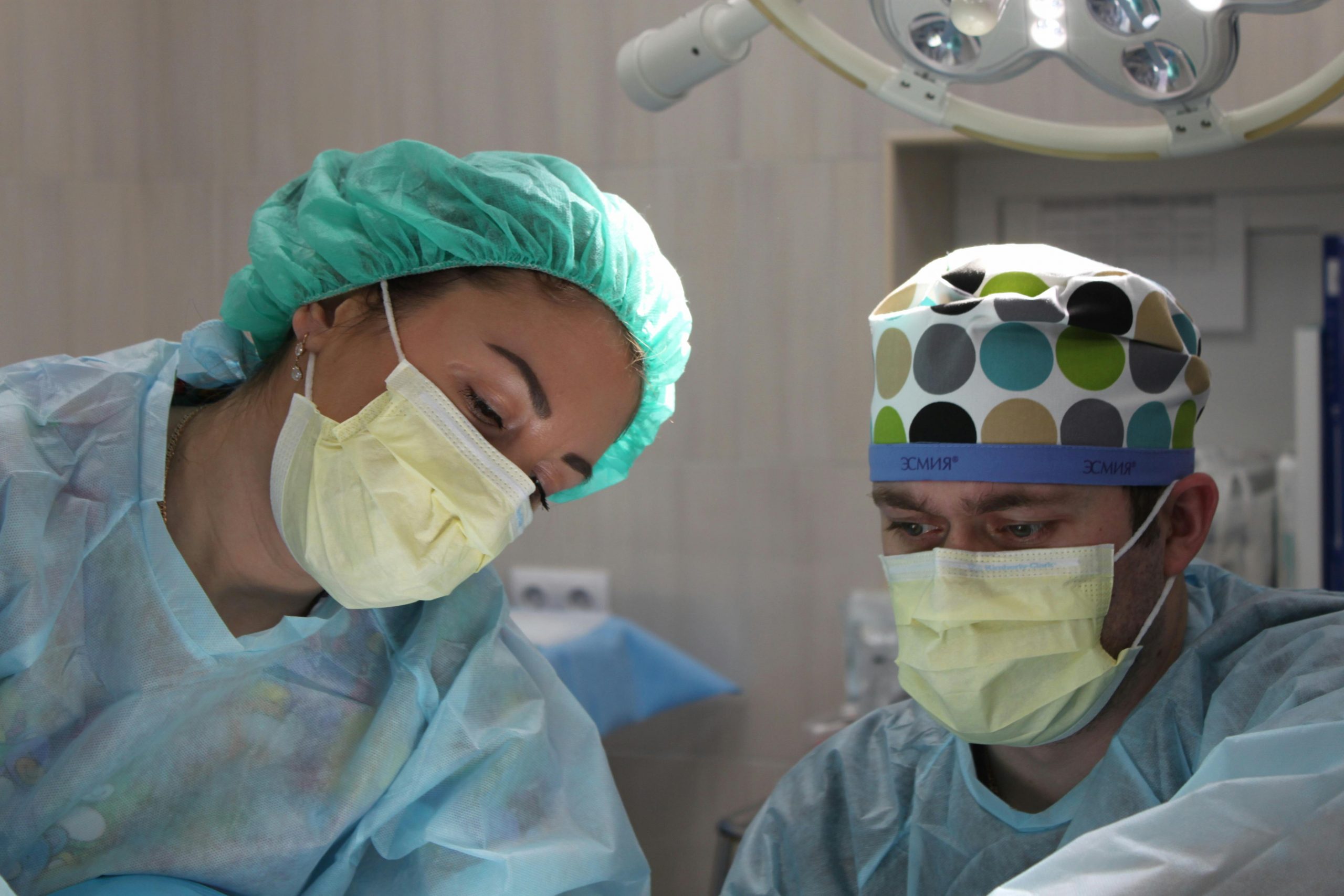

Aging is inevitable, but that doesn’t mean you have to settle for sagging skin and deep wrinkles. Whether you’re starting to notice some looseness in your jawline or you’re simply looking for a refresh, you’ve probably come across the term mini facelift. But what exactly is a mini facelift—and how is it different from a full facelift?
In this guide, we’ll walk you through everything you need to know about mini facelifts: what they are, how they compare to traditional facelifts, who they’re ideal for, what to expect during recovery, and whether the results are worth it.
What Is a Mini Facelift?
A mini facelift is a less invasive surgical procedure designed to address early signs of aging in the lower face—mainly around the jawline, cheeks, and lower jowls. It’s often referred to as a “weekend facelift” because the recovery time is shorter than that of a traditional facelift.
Rather than repositioning deeper tissues throughout the entire face, a mini facelift targets smaller, more localized areas. It’s ideal for people in their late 30s to early 50s who are starting to see sagging but don’t yet need the full works.
Key Goals of a Mini Facelift:
- Lift sagging skin in the lower face
- Sharpen the jawline
- Reduce early jowls
- Provide a fresher, more youthful appearance
How Is a Mini Facelift Performed?

The mini facelift procedure typically takes 1.5 to 2.5 hours and is usually performed under local anesthesia with sedation, though some surgeons may opt for general anesthesia.
Here’s what the procedure usually involves:
- A small incision is made around the ears, usually hidden within natural creases.
- The surgeon tightens underlying tissues and muscles (sometimes called the SMAS layer).
- Excess skin is trimmed and repositioned to create a smoother, lifted look.
- Incisions are closed with sutures and bandaged.
Since the mini facelift involves fewer incisions and smaller areas of adjustment, it’s considered a less invasive option with fewer risks.
What’s the Difference Between a Mini Facelift and a Full Facelift?
While both the mini facelift and the full facelift aim to reduce visible signs of aging and restore a more youthful appearance, they do so in different ways. The key differences come down to how much of the face is treated, how invasive the procedure is, the expected downtime, and the longevity of the results.
Let’s break it down:
1. Areas Targeted
- Mini Facelift: This procedure focuses on the lower third of the face, especially the jawline, jowls, and lower cheeks. It’s meant to address early sagging or softening in these areas—perfect if you’re bothered by mild skin laxity or the beginning of jowls but don’t need a full facial overhaul.
- Full Facelift: A full facelift goes much deeper and wider, targeting the mid-face (cheeks), lower face (jawline and jowls), and often the neck. It’s designed to correct more significant signs of aging such as deep nasolabial folds, sagging in the mid-face, and loose skin under the chin or on the neck.
2. Invasiveness
- Mini Facelift: Because it targets a smaller area and doesn’t involve as much tissue manipulation, the mini facelift is considered less invasive. Surgeons usually make shorter incisions, often hidden in natural creases around the ears. The procedure primarily involves tightening the SMAS layer (the muscle layer beneath the skin) and removing a bit of excess skin.
- Full Facelift: A full facelift is more involved. It often requires longer incisions, extending around the ears and sometimes into the hairline or beneath the chin to reach the neck area. The surgeon lifts and repositions deeper tissues across a larger area, often combining it with neck lifts or fat grafting for volume loss. It’s a more comprehensive approach, requiring more surgical precision and time.
3. Recovery Time
- Mini Facelift: Most patients can return to light activities within a week to 10 days. Bruising and swelling are usually mild and subside faster than with a full facelift. Because it’s less invasive, many people experience a quicker and more comfortable recovery.
- Full Facelift: Recovery can take 2 to 4 weeks, depending on the extent of the surgery and the individual’s healing process. You’ll likely need to take more time off work, limit physical activity longer, and wait a bit before seeing the full, final results. Swelling and bruising are more prominent and may take longer to resolve.
4. Scarring
- Mini Facelift: Scarring is usually minimal and well-concealed around the natural contours of the ears. Because the incisions are smaller and more localized, most patients find their scars are barely noticeable once healed.
- Full Facelift: The incisions are more extensive, sometimes wrapping behind the ears, into the scalp, or under the chin. However, experienced surgeons place them in areas that are naturally hidden, and over time, they typically fade well. Still, they may take longer to heal and require more post-operative care.
5. Results
- Mini Facelift: Offers a natural, subtle lift—you’ll look refreshed, not “done.” It’s ideal if you’re just starting to notice the signs of aging. Results typically last 5 to 7 years, depending on skin quality and lifestyle habits.
- Full Facelift: Delivers more dramatic and longer-lasting improvements. It can significantly reduce deep wrinkles, sagging, and folds, with results that can last 10 years or more. A full facelift is better for individuals with moderate to severe aging concerns.
Who Is a Good Candidate for a Mini Facelift?
Not everyone is the right fit for a mini facelift. The best candidates are typically in the early stages of facial aging and want to address sagging in the lower face without undergoing a more invasive procedure.
You might be a good candidate if:
- You’re in your late 30s to mid-50s: At this age, many people begin to see softening in the jawline and cheeks—but don’t have enough loose skin for a full facelift.
- You have mild to moderate skin laxity: A mini facelift works best if you’re seeing early jowls or some droopiness but your skin still has relatively good elasticity.
- You want subtle but noticeable results: If you’re not looking to change your appearance drastically but want a refreshed, tighter look, this is a great option.
- You’re looking for shorter downtime: Don’t want to spend weeks recovering? A mini facelift lets you get back to work and social life sooner.
- You’re in good health and don’t smoke: Smoking can impair healing and increase the risk of complications. Good general health supports better surgical outcomes.
When a Mini Facelift Might Not Be Enough:
If you have significant sagging in the neck, deep folds around the mouth and cheeks, or very loose skin, a full facelift may be the better option. In some cases, your surgeon might recommend combining a mini facelift with liposuction, eyelid surgery, or injectables for more comprehensive results.
What Are the Benefits of a Mini Facelift?

Mini facelifts are gaining popularity for a reason—they provide a surgical upgrade without the stress of a full surgical recovery.
Top Benefits:
- Natural-Looking Results: Mini facelifts offer gentle enhancement. You’ll still look like yourself—just a more rested, youthful version.
- Minimal Downtime: Most people are back to light activities in under two weeks. That makes it a convenient option for those who can’t take extended time off work.
- Lower Cost Than a Full Facelift: Because the procedure is shorter and less intensive, it typically comes with a lower price tag than a full facelift.
- Smaller Incisions and Less Scarring: The technique involves small incisions, typically around the ears, which are strategically placed to be virtually invisible once healed.
- Can Be Done Under Local Anesthesia: Many mini facelifts are performed using local anesthesia and mild sedation rather than full general anesthesia, which may reduce risks and costs.
- Boosts Confidence and Self-Image: Looking refreshed can positively impact how you feel in both personal and professional settings.
What About the Downside?
No cosmetic procedure is without trade-offs. A mini facelift has its limitations, especially when compared to a full facelift.
Consider the Drawbacks:
- Shorter-Lasting Results: While results are still impressive, they typically last 5 to 7 years—less than the 10+ years offered by a full facelift.
- Limited Correction for Advanced Aging: If you have significant sagging, deep folds, or neck looseness, a mini facelift alone might not deliver the results you want.
- Still a Surgical Procedure: Even though it’s less invasive, a mini facelift involves anesthesia, incisions, stitches, and recovery time. Complications—though rare—can include bruising, swelling, numbness, or infection.
- Not Ideal for Neck Rejuvenation: This procedure does not significantly tighten or smooth the neck. If your neck is a major area of concern, you may need a full facelift or a combined neck lift.
Mini Facelift vs. Non-Surgical Options
Some people assume a few injectables can replace surgery—but that’s not always true. If you’re debating between a mini facelift and non-surgical alternatives like Botox, fillers, or thread lifts, here’s how they stack up:
| Mini Facelift | Fillers & Botox |
| Long-lasting (5–7 years) | Short-term (3–12 months) |
| Addresses sagging skin | Mostly treats volume loss and wrinkles |
| One-time procedure | Requires ongoing maintenance |
| Higher upfront cost | Lower cost per session, but adds up |
For mild aging, injectables might be enough. But if you’re dealing with sagging skin that can’t be plumped away, a mini facelift might be the smarter investment.
What to Expect During Recovery
One of the biggest perks of a mini facelift is the relatively quick recovery compared to more invasive procedures.
Typical Recovery Timeline:
- Day 1–3: Swelling and bruising begin to show. You’ll be asked to keep your head elevated and avoid heavy movement.
- Day 4–7: You may return to light activities. Swelling begins to subside.
- Day 7–10: Sutures are removed. Most people feel comfortable going out in public.
- 2–3 Weeks: You should see the full results with minimal residual swelling.
You’ll likely be advised to avoid exercise, alcohol, and sun exposure for at least 2–3 weeks post-surgery.
Are the Results Permanent?
Mini facelifts offer long-lasting but not permanent results. On average, you can expect the effects to last 5 to 7 years, depending on:
- Your age and skin quality
- Lifestyle habits (smoking, sun exposure)
- Genetics
- Skincare and maintenance
While aging will continue, many people feel the mini facelift “resets the clock” by several years.
How Much Does a Mini Facelift Cost?
Pricing can vary depending on location, surgeon experience, and facility fees, but here are general estimates:
- Mini Facelift: $3,500–$8,000
- Full Facelift: $10,000–$20,000+
The mini facelift is generally more budget-friendly, but it’s still an investment. Be wary of low-cost offers that seem too good to be true. You’re better off paying for experience and safety.
Questions to Ask During a Consultation
If you’re thinking about getting a mini facelift, a consultation with a board-certified facial plastic surgeon is the first step.
Ask the following:
- Am I a good candidate for a mini facelift?
- How many of these procedures have you performed?
- What are the risks and complications?
- Can I see before-and-after photos of past patients?
- Where will the procedure be done?
- What is the expected downtime?
- Will I need any touch-ups?
A trustworthy surgeon will walk you through everything, including whether a mini facelift is the best fit—or if another procedure would better meet your goals.
So, Is a Mini Facelift Worth It?
If you’re not ready for a full facelift but want a noticeable improvement that goes beyond what injectables can offer, a mini facelift might be the perfect middle ground. It’s a safe, effective way to tighten up early sagging and restore a youthful contour to the lower face—with less downtime and fewer scars.
However, it’s not a one-size-fits-all solution. The best results come when the procedure is tailored to your unique face, age, and expectations. Always consult a qualified plastic surgeon to explore what’s right for you.
Summary: Mini Facelift vs. Full Facelift at a Glance
| Feature | Mini Facelift | Full Facelift |
| Areas Treated | Lower face & jawline | Full face & neck |
| Invasiveness | Less invasive | More extensive |
| Recovery | 5–10 days | 2–4 weeks |
| Cost | $3,500–$8,000 | $10,000–$20,000 |
| Longevity | 5–7 years | 10+ years |
| Best For | Mild to moderate aging | Advanced aging and sagging |